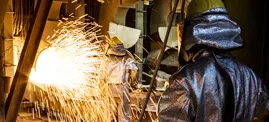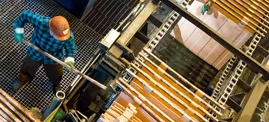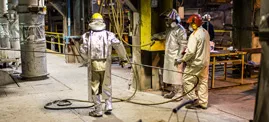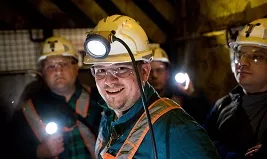General Information
The Lubin mine is located in Poland, on the northern border of the town of Lubin, in Lower Silesia.
It is the oldest mine in the Polish Copper Belt. The recoverable resources of Lubin-Małomice deposit (as at 31.12.2017) are over 336 million Mg of copper ore. The average copper content in the ore is 0.95% and silver – 48 g/Mg.
The Lubin-Małomice deposit contains high grades of silver in addition to copper, with an average grade of Ag in geological resources of 55g/Mg. The dominant lithological type of copper ore is sandstone rock – nearly 70% of resources. Lubin-Małomice deposit is characterized by intensive tectonic displacements within orebody, especially in it south-west part – the deposit here is deposited at a shallow depth, under loose Cenozoic sediments but with a dense grid of faults with high throws. In areas with such intensive tectonic events, exploitation is very difficult, in some cases impossible. The recoverable deposit currently exploited by the Lubin mine is characterized by variability in thickness ranging from 1.5 m to 5.5 m, with an average depth of 2.8 m. The depth of deposition of copper ores in the Lubin-Małomice deposit ranges from 368 to 1006 m.
History
Extremely valuable deposits of copper ore were discovered on 23 March 1957 by a team led by Jan Wyżykowski. Based on this discovery, the construction of the Lubin Mining Plant began on January 1, 1960. The mine started operating eight years later and reached its full production capacity of 4.5 million tonnes of ore per year in 1972. After the expansion of the mine a year later, its capacity increased to 7.6 million tonnes of copper ore per year and continued at that rate until 2012. 2013 saw an increase to 7.8 million tonnes with an expected output of 8.0 million tonnes in 2014. In 2018 the mine celebrated its golden anniversary.
Production
Operations in the Lubin mine are carried out over an area of 158 km2.
The deposit is mined by the room-and-pillar method, using natural roof deflection as well as hydraulic backfill. The mine has seven shafts with depths ranging from 494 to 963 m, one of which is a production shaft and the remaining shafts are used for personnel and material transport as well as ventilation purposes. The production process comprises preparatory work, access and extraction, and transport of ore from the faces to the surface.





